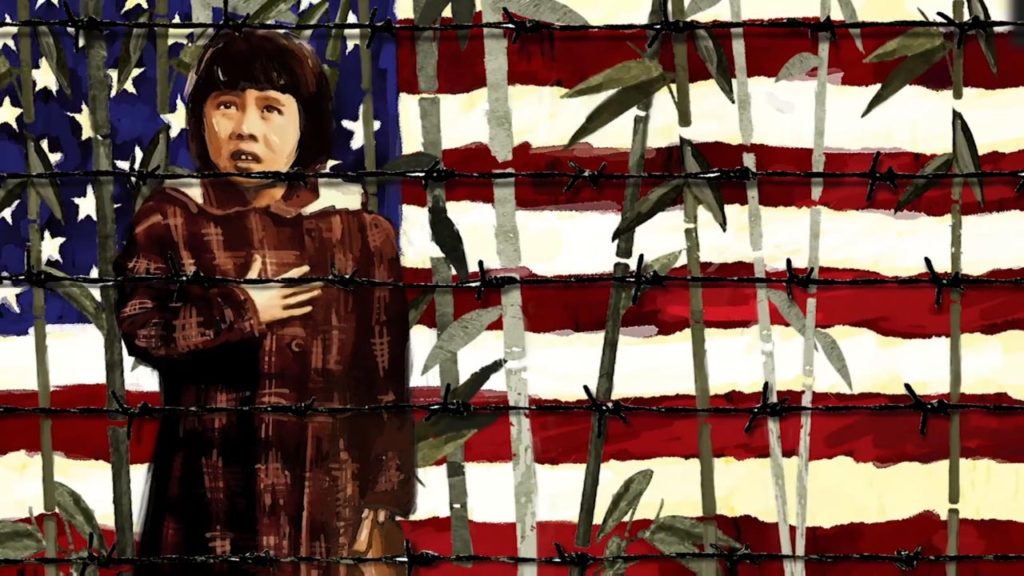Photo courtesy of SpIFF. “Bamboo and Barbed Wire” graphic and title card.
Premiering at the Magic Lantern Theatre, “Bamboo and Barbed Wire,” directed by Karen Day, tells the story of the Minidoka internment camp, located just outside of Twin Falls, Idaho. “Bamboo and Barbed Wire” was sponsored by SFCC’s Associated Student Government. Activities Vice President Natasha Monroe said, “We picked the movie mainly for the large population of Japanese students here on campus. That was the main reason, along with the movie being based in the PNW.”
The film premiered at 11:30 a.m. on Feb. 29. While the film begins with an inspiring, uplifting score in the beginning, the film’s overall tone and topic is much more grim and serious. Shortly after the opening, the film reveals how an Idahoan farmer discovered a forgotten cemetery on his farmland, left over from when Minidoka was still in operation. Rocks that were once gravestones are strewn about and broken apart in a heap, though a larger one is clearly marked with a Japanese kana or kanji (equivalent of an alphabetic letter).
“Bamboo and Barbed Wire” clearly portrays how the disrepair and blatant disregard for the cemetery of the camp reflects the sentiment held by the U.S. government at the time. After Pearl Harbor, Japanese Americans became increasingly persecuted and marginalized, resulting in the internment camps and widespread propaganda made by the government. As most Japanese Americans resided on the West Coast, paranoia spread to neighboring states, such as Idaho. The governor of Idaho at the time, Chase Clark, stated that he believed all Japanese Americans should be “interned indiscriminately,” as stated in the movie.
The film goes into detail about how the internment affects those still alive today, with multiple “talking head” segments. One man described how he was angry at his father for not fighting back, but the reality of it was that most of the interned Japanese Americans had families, and thus, had to protect their children first and foremost, since they were held at gunpoint and forced to evacuate their homes and farms, as mentioned in the film.
“Bamboo and Barbed Wire” doesn’t just focus on the plight of Japanese Americans, though. The film makes clear parallels to how Muslim Americans are being persecuted with the same paranoia in America today. Interspersed throughout the film are segments where the audience is able to look at the life of a young Syrian refugee who came to America, more specifically, Boise, Idaho, with her family.
Though the film could have included more segments featuring her and her family and their struggles coming to America, the story of a local Syrian refugee who openly practices a minority religion, especially in Idaho, brings the film’s core message to the forefront: as quoted from the movie, “The Bill of Rights is only a piece of paper, unless we uphold those rights for all Americans.”
The director of “Bamboo and Barbed Wire,” Karen Day, said her main reason for making the film was because of America’s current, divisive political climate, especially with movements like the 51st State Movement, which aims to divide Washington in two and combine Eastern Washington with the conservative parts of Idaho. Her inclusion of footage of the Charlottesville white nationalist gatherings speaks to this vision. Day concluded the question-and-answer period with this final thought, “We have a tendency to whitewash American history to make it the story we want.”
“Bamboo and Barbed Wire” will be available for streaming online after they are done with the festival circuit, according to their Facebook page of the same name (@bambooandbarbedwirefilm).



